The Trapezium Rule
What is the Trapezium rule?
To find the area under curve, sometimes you will need to use an numerical method to estimate it.
Consider the following curve below:
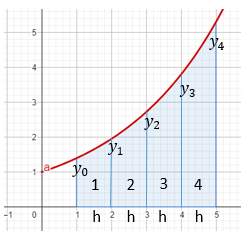
It is possible to split the curve into 4 strips between the limits 1 and 5, with the same width, h. It is possible to estimate the area by considering each strip as trapeziums, and finding the area of each trapezium and adding them up. Using this, it is possible to find an equation for this estimate of the area under the curve above:
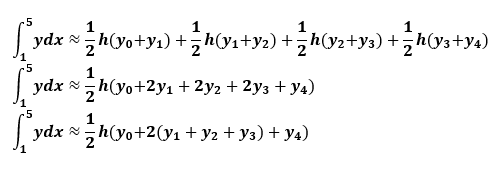
There is a general formula for the area under any region of a curve between limits b and a. This is called the Trapezium Rule:

Note:To find h, there are two ways. The first way is finding the difference between two adjacent x values in a strip. The second way is using the formula h=(second limit-first limit)/number of strips. Usually you would be given a table to fill in for values to be used to find the estimate but if you aren't, then the second way is a better option.
For what curves, the trapezium rule will give an overestimate or an underestimate?
For convex curves, the lines connecting the endpoints would be above the curve, forming an trapezium with an area greater than the area under the region. The reverse can be said for concave curves. Ensure for your exams you know how to differ between them!
Example 2:
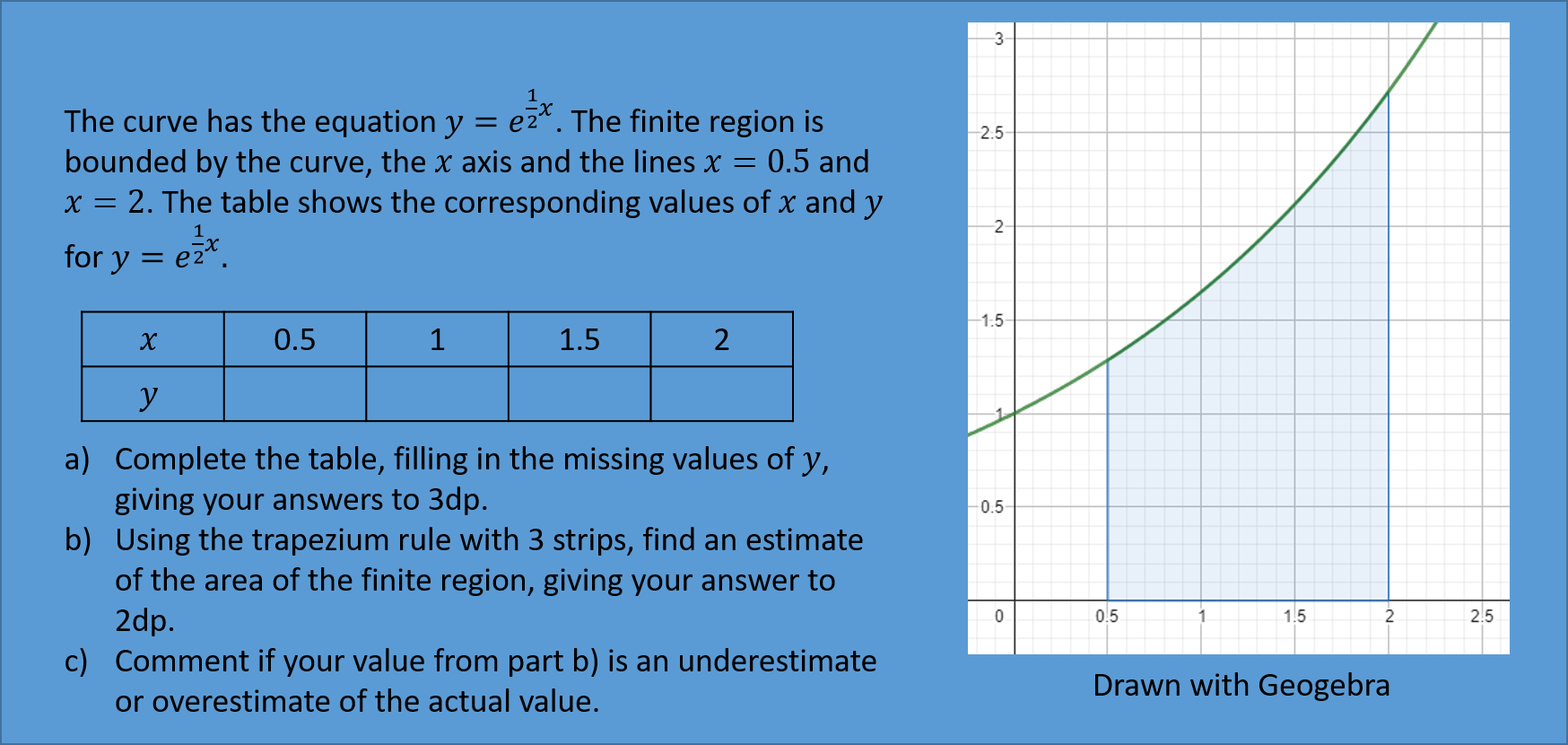

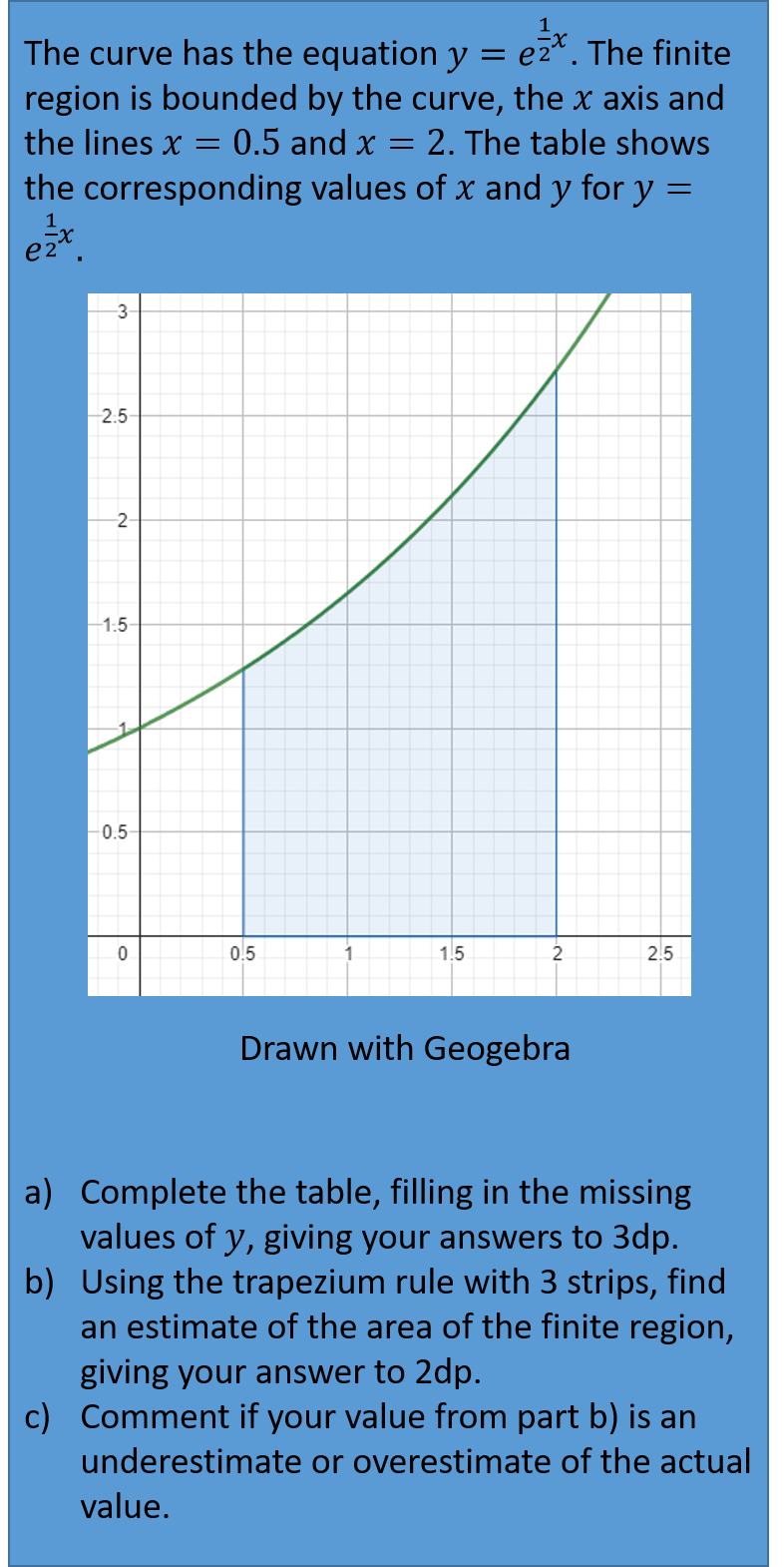

Note: You might be also asked a question, that may ask you to comment on how to increase the accuracy of the estimate. The key point here is increasing the number of strips as splitting the region into more trapezia, increases the accuracy.
Practice Question:
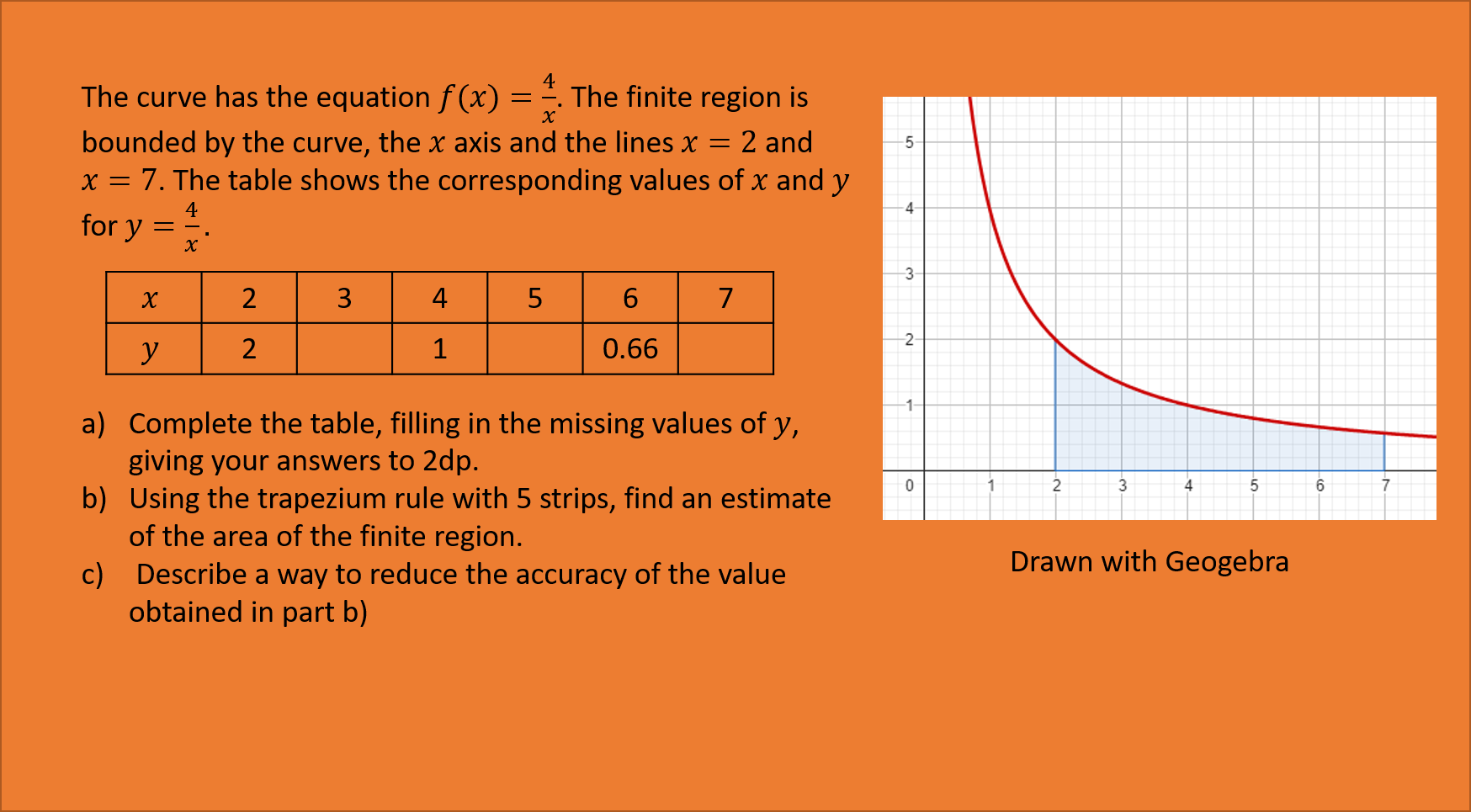
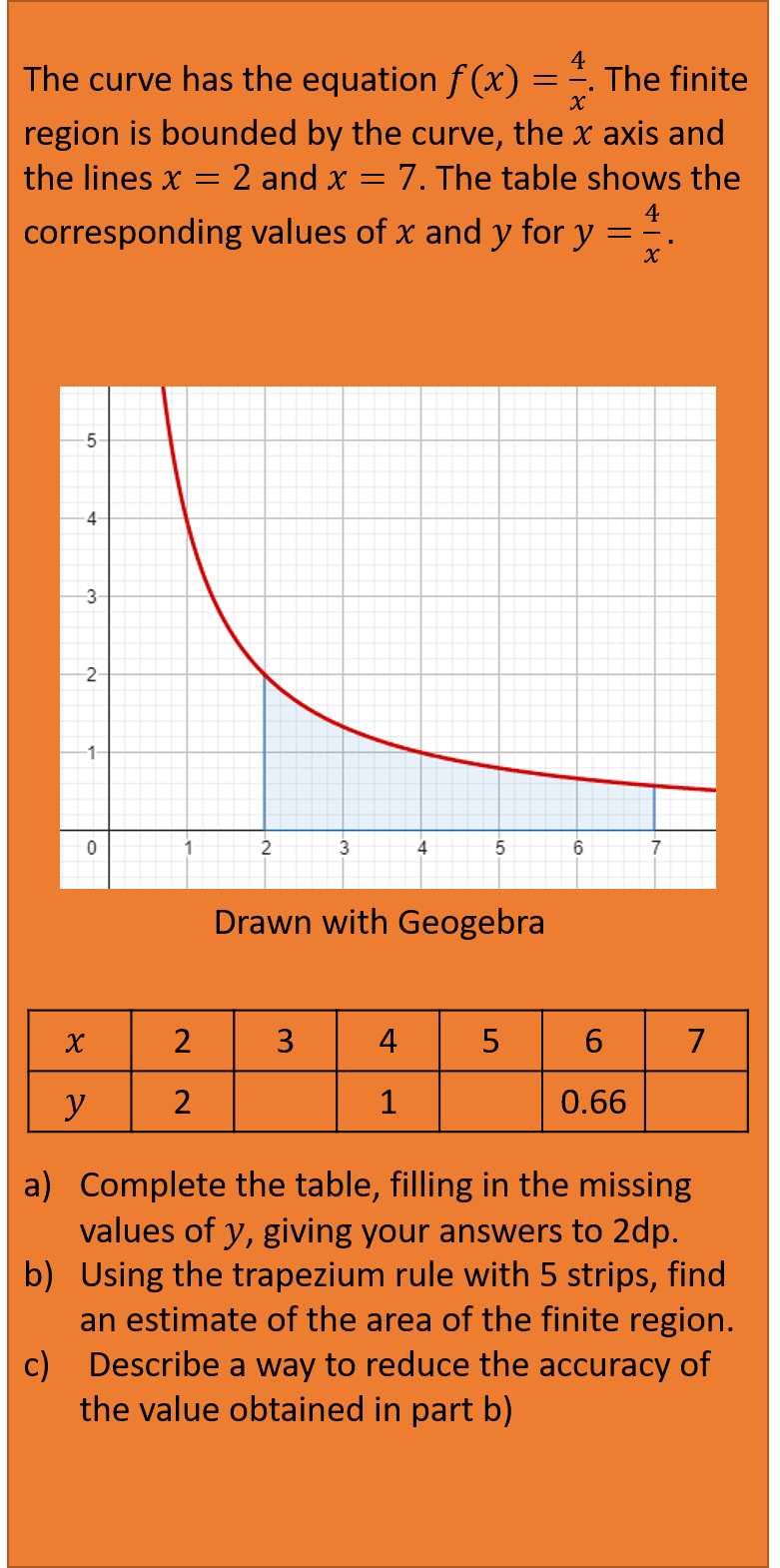


Note: In the extreme case of you getting no table but just the number of strips, don't forget to draw the table yourself as that will make things easier for you. Use the formula for h above, and also remember that there should be 1 more x/y value in your table than the number of strips. After the table, the rest of the process is the same.